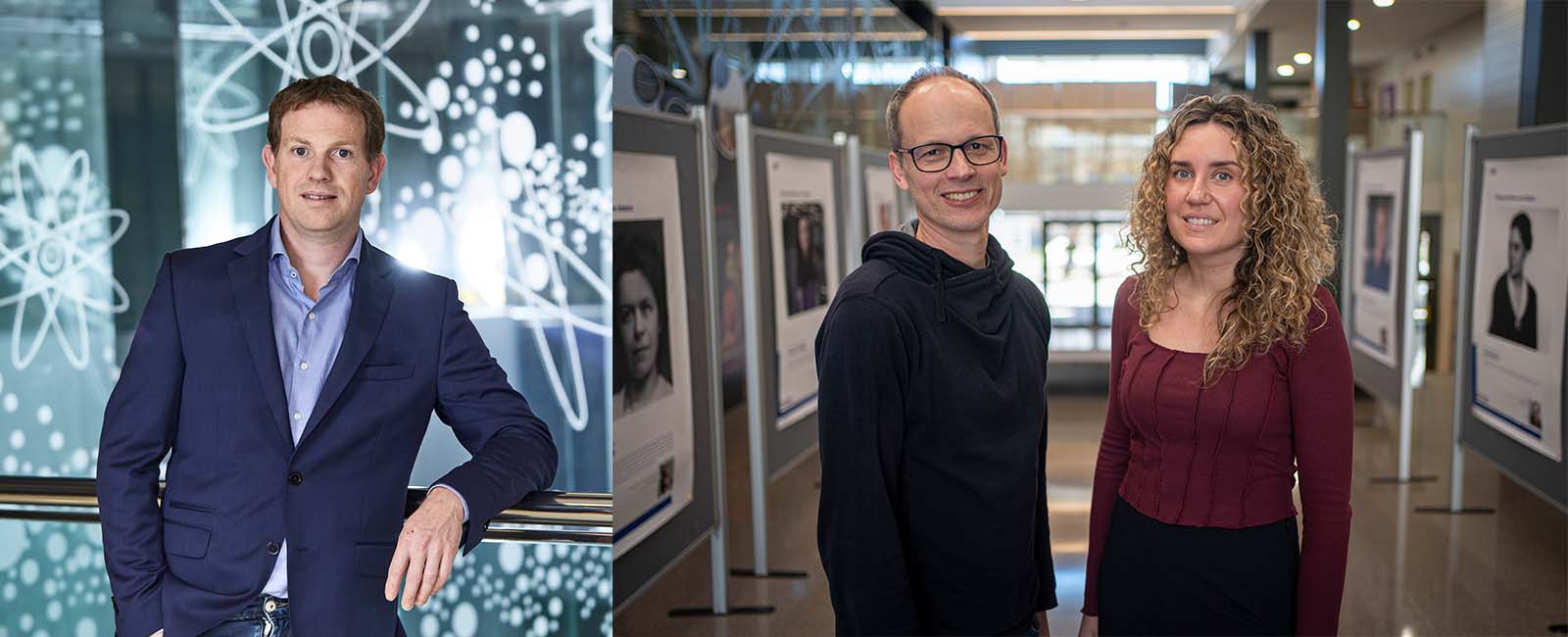RESEARCH TEAM
Principal investigators: Adrian Bachtold, Carmen Rubio and Frank Henricus Louis Koppens (ICFO-Institut de Ciències Fotòniques, Barcelona)
Team members: Rebecca Hoffmann (ICFO-Institut de Ciències Fotòniques); Pablo David Jarillo Herrero (Massachusetts Institute of Technology, United States); Sergio Lucio de Bonis (ICFO-Institut de Ciències Fotòniques); Giulia Piccinini (ICFO-Institut de Ciències Fotòniques); Amir Yacoby (Harvard University, United States).
DESCRIPTION
When some materials are cooled to near absolute zero (i.e., 273.15ºC below zero, the lowest temperature possible), their electrons pair up, allowing them to flow through the material without resistance. This process is known as superconductivity, and certain materials even exhibit it at somewhat higher temperatures, above about -190ºC. But there is as yet no precise understanding of the mechanism underlying this property, known as high-temperature superconductivity. The aim of the awardee project in Physics and Chemistry is to use graphene to unravel its dynamics, potentially opening a future door to readily available ultra-efficient electrical power transmission with zero resistance.
Successive attempts have been made in recent decades to build physical systems that can mimic this behavior, or at least key aspects of it, but even the most promising among them have failed to cool sufficiently to manifest superconductivity. The research team will use a novel physical system in which, they hope, superconductivity will emerge naturally.
This physical system is based on graphene, a material consisting of a single layer of carbon that has exceptional physical properties. One such property was discovered by Pablo Jarillo-Herrero, Cecil and Ida Green Professor of Physics at MIT and a member of the project team. “We take a graphene sheet, stack it on top of another and twist it so the angle between them is just one degree, and boom! the material becomes a superconductor,” he explains. The team’s hope is that this unusual behavior of graphene will open the door to building a physical system that exhibits high-temperature superconductivity and yet is simple enough to allow in-depth study of the mechanism at work.
“For 50 years we have been trying unsuccessfully to understand how high-temperature superconductors work,” says Carmen Rubio, Professor of Physics at the ICFO. “I can imagine a future where we’re able to design materials knowing at which temperature they are going to be superconducting. Right now we are a long way away, but it would be very useful to be able to do that.”
The team hopes their new system will facilitate the study of forces like magnetism, believed to play a key role in high-temperature superconductivity, and other phenomena in which electrons interact. It would then come to operate as an electronic quantum simulator, explains Frank Koppens, ICREA Professor at the ICFO: “The idea of using electrons for a quantum simulator is not new, but it was technically very difficult to implement, especially to get the electrons close enough together. However two years ago we managed to create systems where the electrons were very close together and showed very strong interactions.”
“If our system works, it will be a completely new tool for studying quantum matter,” adds Adrian Bachtold, Professor of Physics at the ICFO. “This is a basic science project that we hope will open the door to a lot of research in laboratories around the world.”

